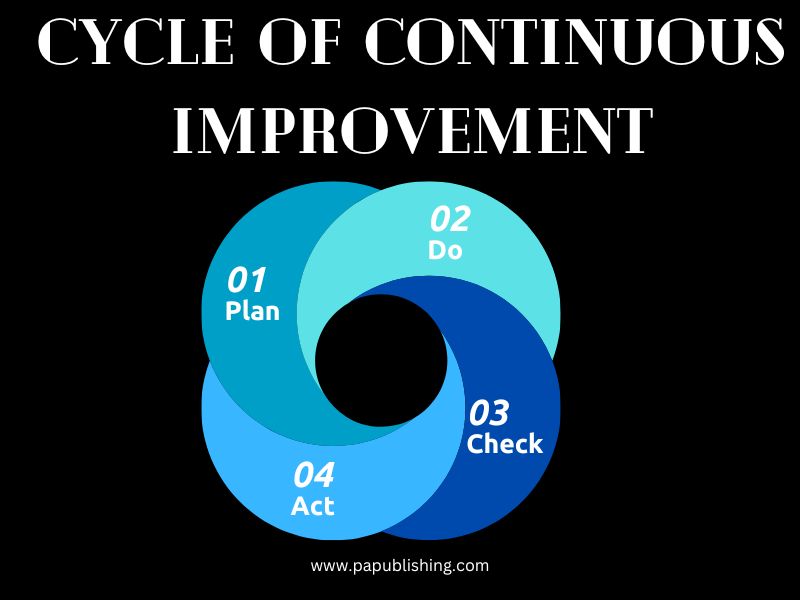What is the Continuous Improvement Process for Businesses? Why it’s important?
In today’s evolving business world, the pursuit of excellence is not a one-time occurrence but an ongoing process. Gone are the days when you stay stagnant and follow the same traditional strategies to manage activities. To thrive in your business startups or well-established brands, you may need to embrace the ethos of improvement. One such systematic approach is a continuous improvement process.
This methodology involves making adaptations in various business aspects to improve overall performance. So, if you want to pave your way toward sustained growth, stick to this blog till the end.
Concept of Continuous Improvement Process
A continuous improvement process (CIP) is a steady practice that organizations deploy to improve their products, services, and various operations. By noticing the current endeavors, the companies find room for incremental changes that add to the ultimate business goals. It’s like a driving force to ameliorate the company’s bottom line.
Moreover, CIP is a stepwise process that needs adequate planning, commitment, and implementation by utilizing the available data.
The Cycle of Continuous Improvement
The process of continuous improvement is also called the PDCA cycle. It includes four stages as follows:
- Plan: This step involves putting together an action plan for improvement.
- Do: It involves implementing the plan on a small scale to see its effectiveness.
- Check: The stage involves verification of the implemented plan.
- Act: Finally, it’s time to apply the effective plan on a large scale in the organization.
Why is Continuous Improvement Important?
The importance of a continuous improvement process cannot be overstated. Using this methodology, you can foster your organization’s growth and resilience. Some other benefits are discussed below:
- CIP streamlines your workflows by alleviating the bottlenecks in the execution. It directly contributes to enhancing operational efficiency and productivity.
- By constantly scrutinizing the operations, the businesses rectify the quality issues beforehand and improve customer service.
- When there’s a culture for continuous improvement in the workplace, it empowers the employees to adopt innovation.
- The continuous improvement process can also help in mitigating employee turnover. 63.3% of US companies reported that retaining employees is harder than hiring them. When the employees give a suggestion for improvement, and the company values it, it keeps the workforce engaged. So, they actively participate in business operations and are less likely to leave the organization.
Continuous Improvement Process Steps
Continuous improvement is a cyclical process that contains a series of steps that foster ongoing enhancement. The most basic steps are:
Assess Current Situation
The primary step to implementing a continuous improvement process is identifying modification opportunities. For this purpose, you may need to analyze the business data to observe the company’s current affairs.
Data Collection & Analysis
Next, you might be thinking about where you can start gathering the required information. For that, you can assess the performance metrics, trends, and work progress. You can also solicit feedback from the employees and customers to find out the areas for improvement.
Address Specific Problem
Based on the analysis of the ongoing state of the process, pinpoint the root cause of the problems affecting the overall performance. Clearly define those challenges that are bottlenecks for achieving your ultimate quality and efficiency.
Develop and Implement the Solution
Next, brainstorm the potential solutions to the identified problems. You can also involve cross-functional teams to offer innovative ideas. Focus on both short and long-term strategies. Pick an effective solution that aligns with the company’s goals. It may include training sessions, adoption of advanced technologies, or other adjustments based on the relevant issue.
Evaluate the Results
After implementing the selected solution, it’s time to monitor the impact of the changes. Measure the performance metrics and compare them with the baseline data. Evaluate the resulting outcomes and adjust the continuous improvement strategies accordingly.
Standardize the Process
If your solution is successful, integrate it into the company’s standard process. Clear documentation is significant to utilize the solution to quickly fix a similar situation in the future.
Conclusion
In short, the continuous improvement process is a mindset that drives businesses toward long-term success. Implement these strategies and see your business grow!

